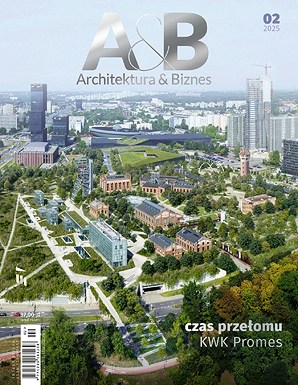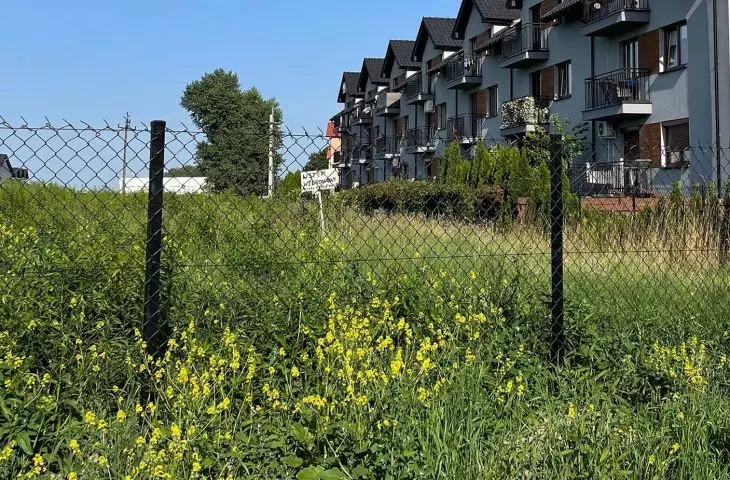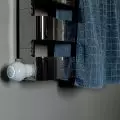Suburbanization in Poland is gaining momentum, and municipalities around large cities are becoming increasingly crowded. Although new settlements tempt with space and an idyllic lifestyle, the reality often deviates from the promises. Residents struggle with a lack of infrastructure, commuting problems and developers who don't always keep their word. Can chaotic spatial development be stopped?
I look at a map of Poland and see red rimmed areas. The one around the capital is shimmering the most, then the one around Poznań, Wrocław, the Tri-City, although it can still be said that the west of our country is redder than the east. The map I'm looking at is the 2019 Rural Mobility Index for Poland. This is the migration turnover rate, which refers to the sum of immigrants and emigrants per population in a given place, and the migration efficiency rate. The map looks quite similar to the one a piece further down, the migration balance map.
Rural mobility index in Poland in 2019. - Compiled on the basis of the CSO Local Data Bank.
Długosz, M., & Szmytkie, R. (2022). Rural areas in the system of internal migration in Poland. Regional and Local Studies, 3(89), 86-100.
Migration turnover in rural units in Poland in 2019. - Compiled on the basis of the CSO Local Data Bank.
Długosz, M., & Szmytkie, R. (2022). Rural areas in the system of internal migration in Poland. Regional and Local Studies, 3(89), 86-100.
Much has already been written about suburbanization - nay, it has even been calculated that such spatial management, is basically mismanagement. After all, in 2021 we were paying 2,200 zlotys a year out of our own pockets for this purpose, statistically per person[1]. Even then, we wrote that the neighborhoods of the largest cities were urbanizing heavily. The consensus in the community was that something had to be done, that this could not go on. Some people are looking out for hope in the emergence of master plans. The legal change to the planning system has as one of its goals precisely the neutering of plots of land for the next doe development. It is intended to curb so-called "vuzetts," which are supposed to be the cause of chaotic development.
vuzetts not by regulation
This year's audit by the Supreme Audit Office found that most of the audited municipalities issued zoning decisions in violation of the law. In many cases, the proceedings were unreliably conducted, and the documentation was not properly supervised. Municipalities often lacked up-to-date zoning plans. The NIK noted that some municipalities did not charge fees, despite the fact that the development of infrastructure financed by the municipalities raised property values. It also found the risk of conflicts of interest and corruption mechanisms in some of the audited offices. As always, the low percentage of land covered by local zoning plans proved to be a problem - in 2023, only 13% of the area of the audited municipalities was covered by an LSDP. Zoning decisions were often issued even when investments did not comply with zoning plans. Did these figures surprise me? Not especially. Those who have worked with "WZs" know that this is a slippery ground.
I was surprised, however, when I read a headline in one of the daily knowledge portals saying that it was the neighboring municipalities that were expanding. "In the municipalities of Lubowo, Turek or Kazimierz, the increase was recorded at 20 percent, but where did the statistics actually go up and surprise many? In our photo gallery above you will find a list of 10 municipalities in Wielkopolska to which the most new residents have arrived in recent years," the author concludes the article. I browse the gallery, which is, of course, clickbait, generating traffic to the site. The first place in terms of population growth is, of course, at the end. I'll reveal here that it is Kleszczewo, which has increased its registered population by 67% since 2013. There are quite a few such Kleszczewo's in our country.
obważanek grows
One could question the methodology, talk about the quality of CSO data, but no matter how we count, looking at satellite data, the conclusion is one - we are suburbanizing. While the reasons for planning in this way in the municipality can be found in the lack of an MPZP, the reasons for the move are more likely to be found in the wallet (or more precisely, creditworthiness combined with the search for a sufficiently large square meter), together with the idea of moving to the countryside as a dream of an idyllic life. Thus we have a recipe for a house near the city.
However, I didn't want to write another text in which I would cover topics scientifically. I wanted to ask people who live in such places, precisely how they live. After all, developers say that their customers highly praise all investments[2].
Banino - Banino municipality, a Kashubian village in Pomeranian Voivodeship, a suburb of the Tri-City.
Google Maps
When I asked about how to live, for a graphic showing the problem, I chose Banino. It's a municipality that symbolizes the vision of greedily taking over more plots of land undergoing deforestation. I don't have to wait long, the first to speak is Ania.
voice of a resident
"Hey, I live in the settlement you had at your place. It's not as bad as it looks :P. Generally we can get everywhere on foot in about 20 minutes, bakery, grocery, 30 minutes pharmacy, clinic, biedra, stores, drugstores. Husband 15 minutes walk to work, on the way we have a child's kindergarten. We also walk to the playroom, cafeteria and the kids also walk to school. The only downside is the roads. The municipality completely ignores the topic. It doesn't want to take over private roads and you have to improve its condition yourself." - he writes. I inquire about the roads, including the safety of walking. "With our neighbors, we have a rule that we burn lights in front of our houses so that there is something to see in the evenings." - he replies. On the community road, the lights are so 1/4 of the length and... were made from the civic budget. "There's no way to count on a sidewalk either, because the road is so narrow that there won't be room for one. Only when I moved in did I find out that legally such things are allowed, it was a shock. A car will always pass somehow, but the sidewalk should be, because it's the children's way to school. And unfortunately, not every driver slows down as they pass pedestrians," she adds.
Suburbanization in practice - A view of the houses in a swank development near Krakow, accessed by a road made of concrete slabs.
Magdalena Milert
Hania, who once had a boyfriend there, also writes to me. She confirms the words of my first interviewee. "From what I've noticed, despite the fact that mostly young couples + small children live in the area, there are NO sidewalks or designated pedestrian areas." She adds that the would-be in-laws, the boyfriend's parents, wanted a "home," not an apartment. The building has a moisture problem, and the lot is not water-maintained. "I don't think they realized too much what they were signing up for," he quips.
water verified
I also get messages from other places with similar development patterns and problems. "We have a house in such a patch of land, but in the countryside, close to the center (store, church, bus stops) of the village," he says. - Kasia writes. "This area about 3-4 years ago began to be developed by developers. Ostensibly houses near the city, but as far as we, as self-building investors, did a survey of the land, we had a plot before, so we saw how the neighborhood is alive here, how nature is alive..." - he continues. They have a house without a basement, with 3 steps to get in. Groundwater is high there, and drainage in the fields was not carried out efficiently. Houses that are already sold and were built by a developer - this year were scenes of drama, especially in the spring, there was unfortunately flooding. "And the houses on level ground! Now another developer has taken on construction, closer to us ... and is doing the same thing." - he notes. "I'm leaving aside the fact of screwing people that the municipality will make roads, sidewalks, etc. maybe if these people would have re-registered and started paying taxes here, it would have been more realistic, and people often stay registered in the city because, for example, a child goes to kindergarten there." - he concludes.
Sylwia also has a problem with water. She lives in a house with her husband, son and dog. Previously they had a fifty-square-meter apartment in Wroclaw. With both of them working from home, they needed more space. Sylwia notes that she certainly loses more time commuting. The developer promised a lot. She herself finds that he cheated them badly. "I have a cornfield outside my window, which I love, but in the autumn I don't like to go out, because it makes it one big draft," she says. Poor workmanship took its toll with the floods. "We were flooded, just yesterday we opened a savings account for a special purpose, namely repair and drainage around the house. According to the valuation of specialists, about 50k..." Sylvia, however, is happy that her child is breathing fresh air. "Yesterday I went out for a walk and came back with three beautiful pumpkins from a neighbor, which my son has already eaten for breakfast today," she shares. She concludes that it's hard to take stock of the gains and losses. "I'm happy that we have a place to invite the family for the holidays, but living in such a place is yeasty because of the commute, or at least the extra cleaning of the brake pads, because they are clogged from the sand from the field," she concludes.
if I can offer any advice
Statements I could multiply, I could also give examples of comments in which people see no disadvantages of such a residence. It is clear that not everyone needs to live in a block of apartments, many people find themselves living near the city. After all, my interlocutors also point to the advantages of owning a house. What I would like to conclude this text with is not an appeal not to live under the city, but an appeal to carefully check the place to which we want to move. In the clash with the developer, in the battle of arguments, endurance, perseverance and funds - we are probably the losers. Unfortunately, you should make every effort to check every detail of the development and the neighborhood, lest you be bitterly disappointed. The feeling of being cheated is difficult, frustrating all the more when it occurs in the case of a house - a place that is supposed to be a family focal point, an oasis of peace, security. If we lose peace and security in such a place, it is difficult to imagine a good life. Check, check and check again - the developer, the plot and the neighborhood (after all, we also move in to use the sidewalks, bus stops and roads) - this much I can suggest to people who are looking for their M. I could appeal to architects, local government officials to double-check subsequent projects and applications, to discuss concerns with the developer. And to developers I could appeal to them not to cheat, I could appeal to their conscience - but does anyone still believe that this will do anything?
I open my browser, browse the news from the region. A headline greets me: "An elegant housing development is springing up in the fields of Nowa Huta. Developers have appreciated the charm of Krakow's eastern fringes. Will there be further investments?"
Magdalena Milert
[1] Śleszyński, P., Kukołowicz, P. (2021), Społeczno-gospodarcze skutki chaosu przestrzennego, Polish Economic Institute, Warsaw.
[2] Józefiak, B. (2024). Pathfinder. This is not a country to live in. Znak Literanova.



























